Great Ouseburn, West Yorkshire
Up to 1834
In 1828, the Great Ouseburn Gilbert Union was formed. It comprised the 40 parishes of Arkendale, Baldersby, Bickerton, Burton Leonard, Branton Green, Clareton, Coneythorpe, Dishforth, Lower Dunsforth, Upper Dunsforth, Farnham, Goldsborough, Green Hammerton, Kirk Hammerton, Helperby, Hessay, Hutton Conyers, Kirkby Hall, Kirkby Hill, Knapton, Langthorpe, Markington cum Wallerthwaite, Marton cum Gratton, Minskip, Morton le Moor, Bishop Monkton, Moor Monkton, Norton le Clay, Great Ouseburn, Little Ouseburn, Rainton cum Newby, Little Ribston, Rufforth, Shipton, Sicklinghall, Skelton, Tollerton, Whixley, Widdington, and Youlton. Skelton joined the Union in 1837. A union workhouse was erected at the west of Great Ouseburn on the Boroughbridge to York road. The traditional source of the River Ouse lies in the workhouse grounds and marked by an old stone colume bearing the inscription 'Ouse River Head'.
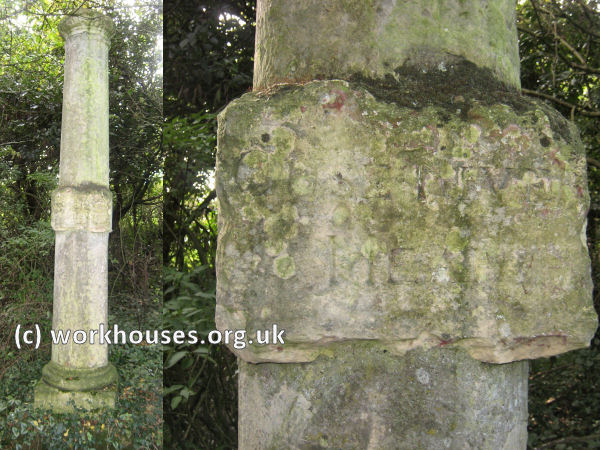
Great Ouseburn Ouse Head marker stone, 2010.
© Peter Higginbotham.
A row of poorhouses existed at the south of Minskip, where Prospect Cottages now stand.
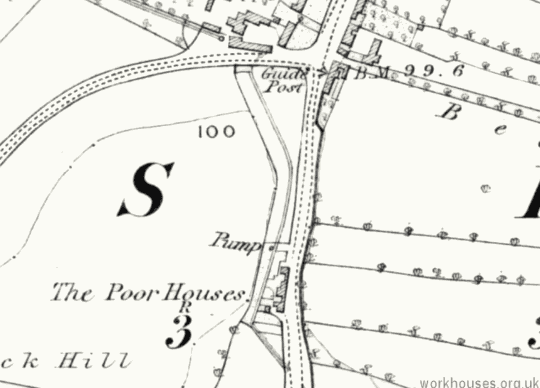
Minskip poorhouses site, 1855.
Rufforth had some poorhouses which stood at the north of the village.
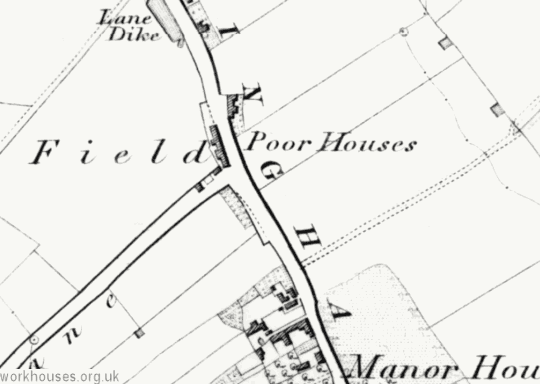
Rufforth poorhouses site, 1850.
In 1834, the parish of Aldborough, not part of the Gilbert Union, was reported as having its own workhouse whose inmates then comprised 3 males aged under 12, and 3 females under 70. The workhouse occupied premises on Front Street, Aldborough.
Former Aldborough Parish workhouse.
After 1834
Because of its Gilbert Union status, Great Ouseburn was exempted from most of the provisions of the 1834 Poor Law Amendment Act. However, because of the scattered nature of its member parishes, the Poor Law Commissioners tried, unsuccessfully, to persuade Great Ouseburn and the three other Gilbert Unions in the area (Carlton, Barwick-in-Elmet, and Great Preston) to convert to a tidier arrangement of Poor Law Unions administered under the 1834 Act. An 1838 map, published by the Commissioners, shows the areas included in the four Gilbert Unions.
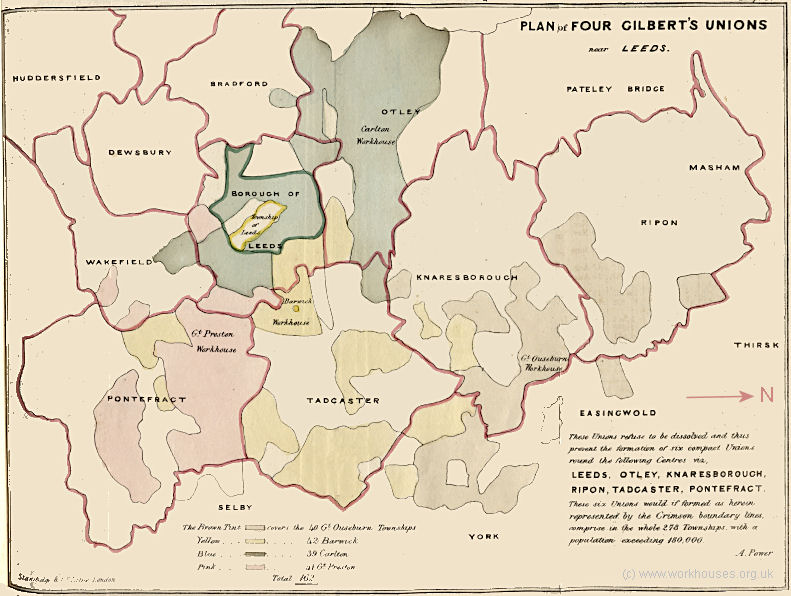
Yorkshire Gilbert Unions map, 1838 (Great Ouseburn shown in brown).
© Peter Higginbotham.
After 1834, the Gilbert Union continued to use its existing workhouse. The site is shown on the 1855 map below.
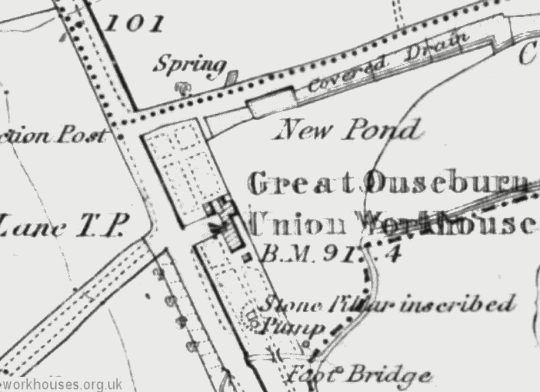
Great Ouseburn workhouse site, 1855.
It was only in 1853 that the Commissioners, due to legal technicality relating the union's Annual General Meeting, were able forcibly to dissolve the Great Ouseburn Gilbert Union. In 1854, a new Great Ouseburn Poor Law Union was formed in its place. Some of its previous member parishes moved to join other Poor Law Unions in the area, while Great Ouseburn itself received a number of additional parishes.
The new union officially came into being on 8th June, 1854. Its operation was overseen by an elected Board of Guardians, 41 in number, one representing each of constituent parishes and townships as follows: Acomb, Aldborough, Allerton Mauleverer with Hopperton, Arkendale, Boroughbridge, Coneythorpe-with-Clareton, Copgrove, Upper Dunsforth with Branton Green, Lower Dunsforth, Ellenthorpe, Green Hammerton, Kirk Hammerton, Helperby, Hessay, Humberton, Kirby Hall, Kirby Hill, Knapton, Langthorpe, Marton with Grafton, Milby, Minskip, Moor Monkton, Norton-le-Clay, Great Ouseburn, Little Ouseburn, Nether Poppleton, Upper Poppleton, Nun Monkton, Roecliffe or Rocliffe, Rufforth, Skelton, Shipton, Staveley, Thornton Bridge, Thorpe Underwoods, Tollerton, Westwick, Whixley, Widdington, amd Youlton. In 1869, with the dissolution of the other Gilbert Unions in the area, the Union was joined by several further parishes: Cattal, Great Ribston with Hunsingore, Thornville, and Walshford.
The population falling within the union at the 1851 census had been 12,042 with parishes ranging in size from Humberton (population 1) to Boroughbridge (1,095). The average annual poor-rate expenditure for the period 1852-4 had been £2,566 or 4s.3d. per head of the population.
In February 1855, the workhouse matron, Mrs Davy, died. Two months later, the 61-year-old master, Thomas Davy, hung himself.
In August 1856, the Great Ouseburn workhouse was condemned by the Poor Law Board as being unfit for the reception of paupers. The board of guardians was forced to erect a new workhouse which was constructed on the site of the previous Gilbert Union building. The building, which seems to have been complete by the end of 1857, was designed by John and William Atkinson of York. Its location and layout are shown on the 1893 map below.
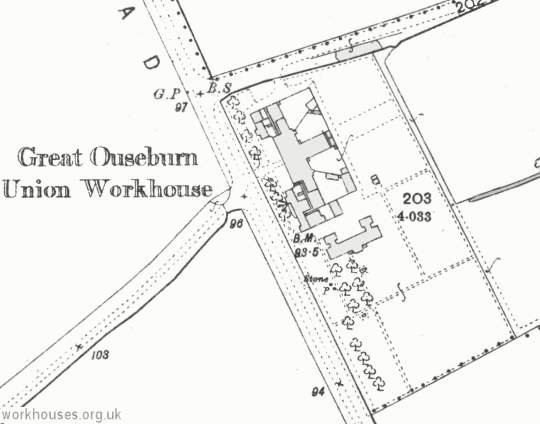
Great Ouseburn workhouse site, 1893.
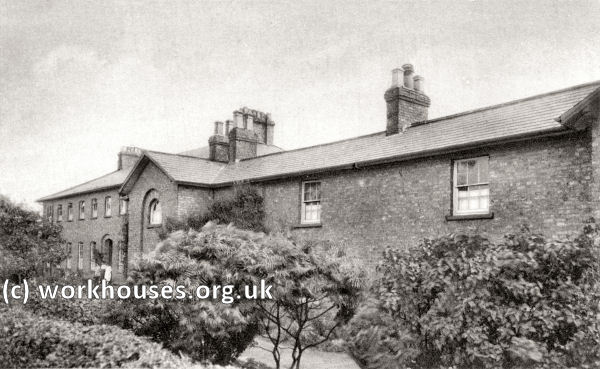
Great Ouseburn workhouse from the south-west c.1910.
© Peter Higginbotham.
The T-shaped main building could accommodate about 60 inmates.
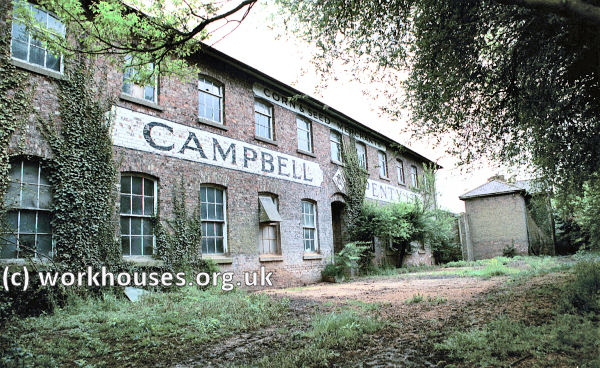
Great Ouseburn main block from the north-west, 2001.
© Peter Higginbotham.
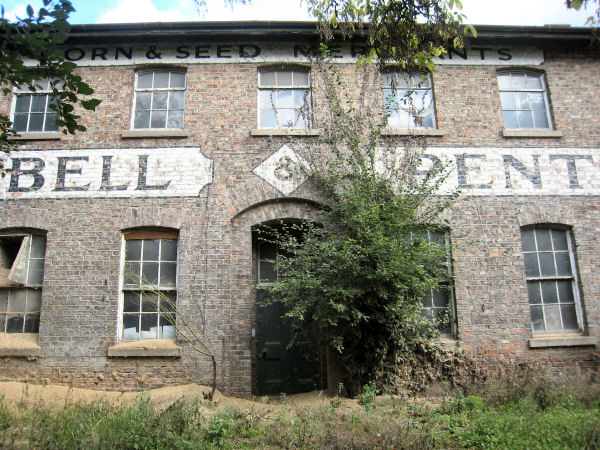
Great Ouseburn main entrance from the west, 2010.
© Peter Higginbotham.
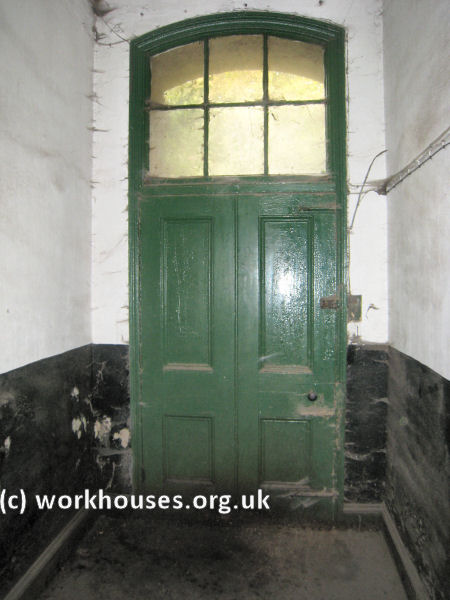
Great Ouseburn main entrance interior, 2010.
© Peter Higginbotham.
In 1878, vagrant wards were added at each end of the front of the building's frontage.
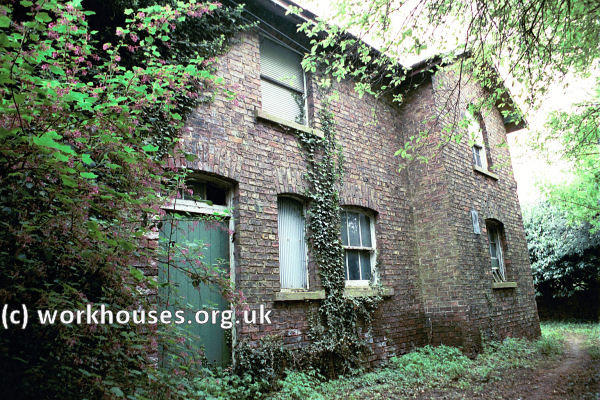
Great Ouseburn southern vagrant block from the north-west, 2001.
© Peter Higginbotham.
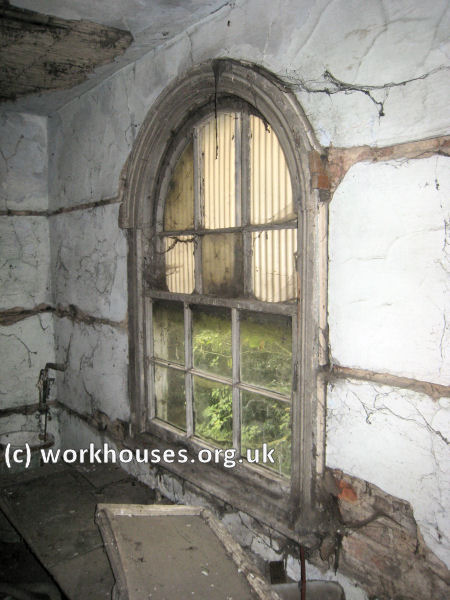
Great Ouseburn vagrant block interior, 2010.
© Peter Higginbotham.
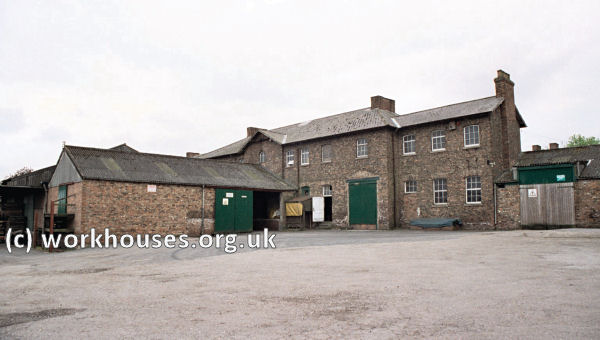
Great Ouseburn main block from the north-east, 2001.
© Peter Higginbotham.
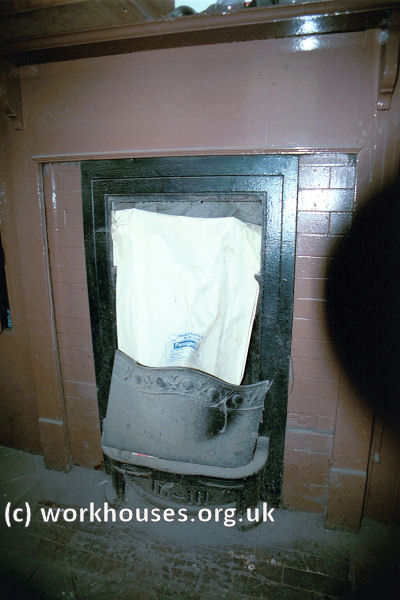
Great Ouseburn workhouse fireplace, 2010.
© Peter Higginbotham.
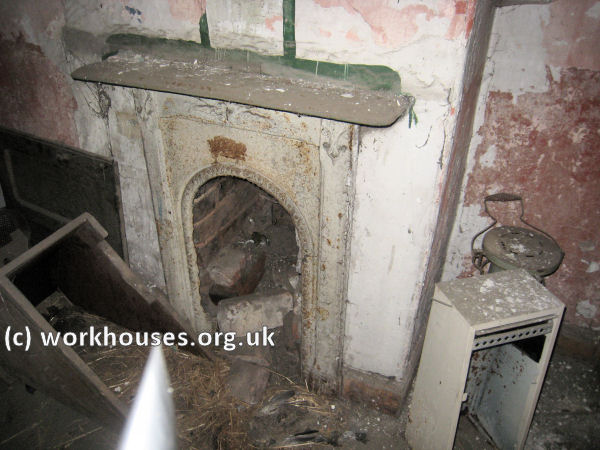
Great Ouseburn workhouse fireplace, 2010.
© Peter Higginbotham.
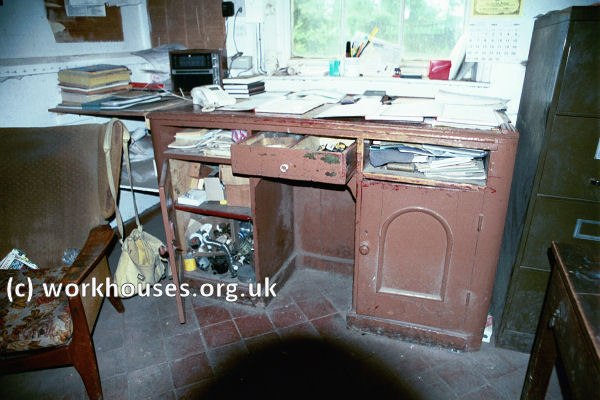
Great Ouseburn master's office desk, 2001.
© Peter Higginbotham.
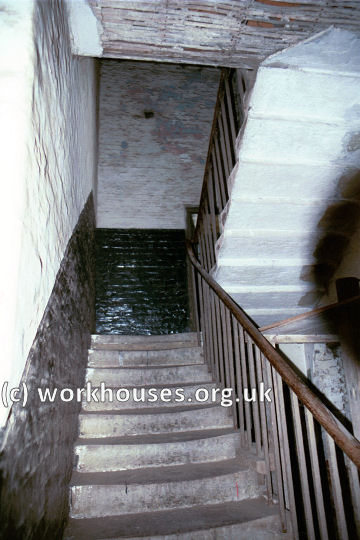
Great Ouseburn internal staircase, 2001.
© Peter Higginbotham.
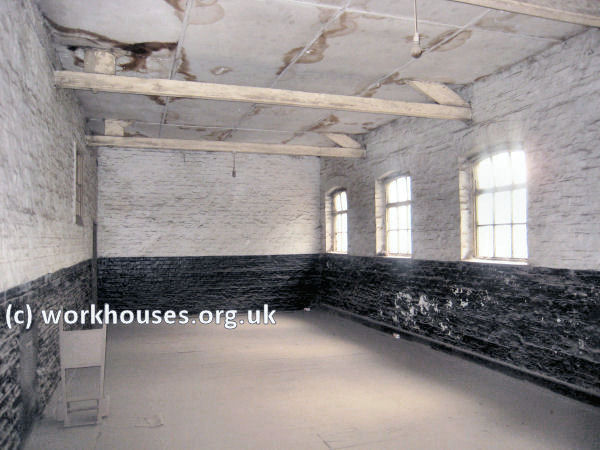
Great Ouseburn dormitory interior, 2010.
© Peter Higginbotham.
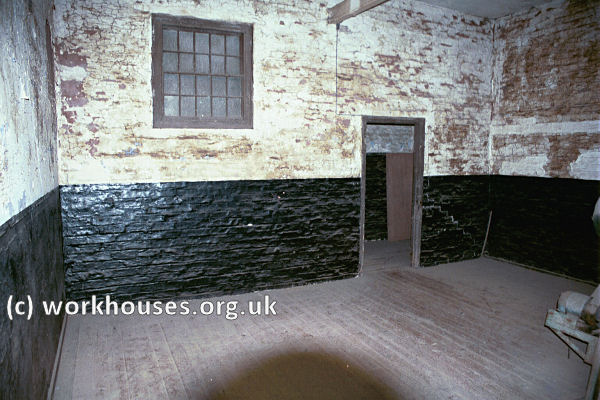
Great Ouseburn dormitory interior, 2001.
© Peter Higginbotham.
The master of the new workhouse was George Pybus, who held the post until 1863. In 1859, he married the workhouse schoolmistress, a Miss Dickinson. She was aged about twenty while he was over forty.
An infirmary was erected at the south on the workhouse in 1891, at a cost of about £1,500.
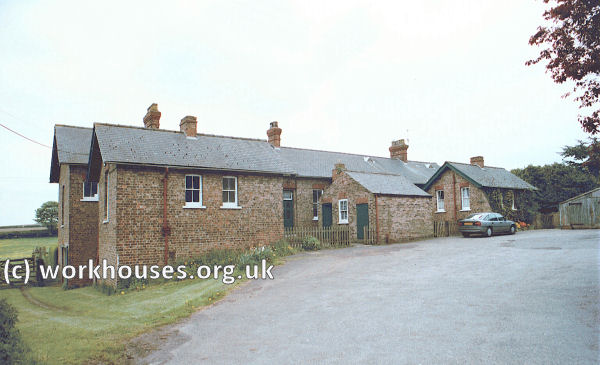
Great Ouseburn infirmary block from the north, 2001.
© Peter Higginbotham.
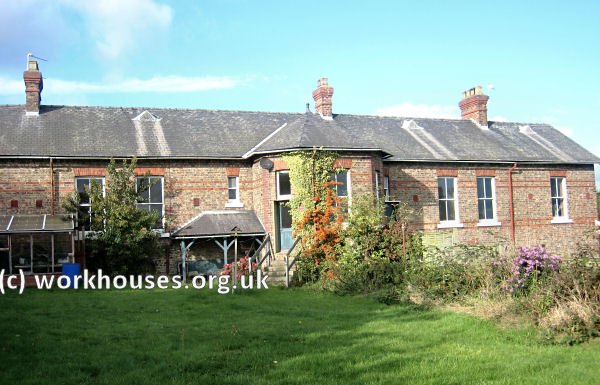
Great Ouseburn infirmary block from the south, 2010.
© Peter Higginbotham.
At some time in its history, a first-floor room in the main building appears to have been pressed into use as a surgical ward, as indicated by the wording scratched on its entrance door.
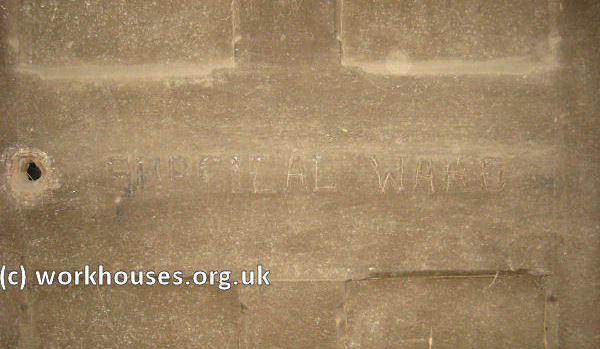
Great Ouseburn workhouse — door to 'surgical ward', 2010.
© Peter Higginbotham.
In 1930, the workhouse was taken over by the West Riding County Council who found conditions to be primitive. Water was drawn from wells, heating was mostly by open fires, and electricity came from a paraffin engine. A plan of the site at that date is shown below.
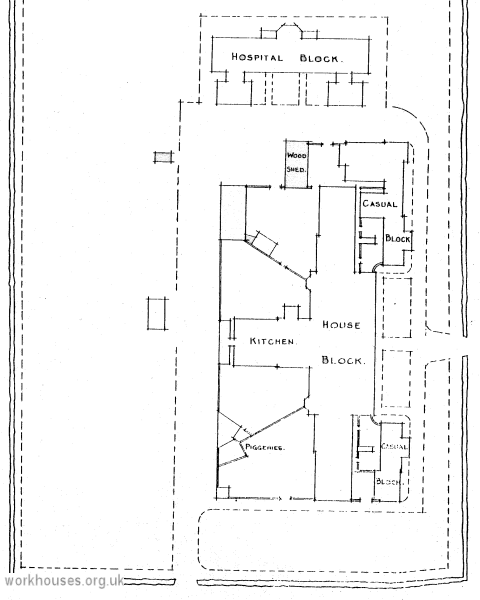
Great Ouseburn workhouse site, 1930.
The former Great Ouseburn union became part of a new Public Assistance district called Claro centred on Knaresborough and the Great Ouseburn institution was closed down. In the 1930s, the ground-floor room at the right of the main entrance was used for local cinema shows. During the Second World War the building was used as an anti-aircraft station and also housed Italian prisoners of war who were looked after by a Scottish regiment. It is said that the prisoners were escorted to Sunday church services in the nearby village accompanied by bagpipes.
In about 1953, the buildings were acquired by the seed merchants Campbell & Penty. However, little redevelopment has been undertaken and in 2001 much of the interior was relatively unaltered since its use as a workhouse.
Staff
Inmates
Records
Note: many repositories impose a closure period of up to 100 years for records identifying individuals. Before travelling a long distance, always check that the records you want to consult will be available.
- North Yorkshire County Record Office, Malpas Road, Northallerton DL7 8TB. Virtually no local records survive — holdings include: Guardians' Minutes (1898-1930).
Bibliography
- Great Ouseburn Workhouse by Anthony Chadwick (Ripon Museum Trust leaflet, 1996)
- Hibbs, H (ed, 1990) Victorian Ouseburn — Geo. Whitehead's Journal 1840-1909
Links
- Ripon Workhouse Museum and Garden, Sharow View, Allhallowgate, Ripon HG4 1LE.
Acknowledgement
- Thanks to Pat Wood for information on Great Ouseburn.
Unless otherwise indicated, this page () is copyright Peter Higginbotham. Contents may not be reproduced without permission.


